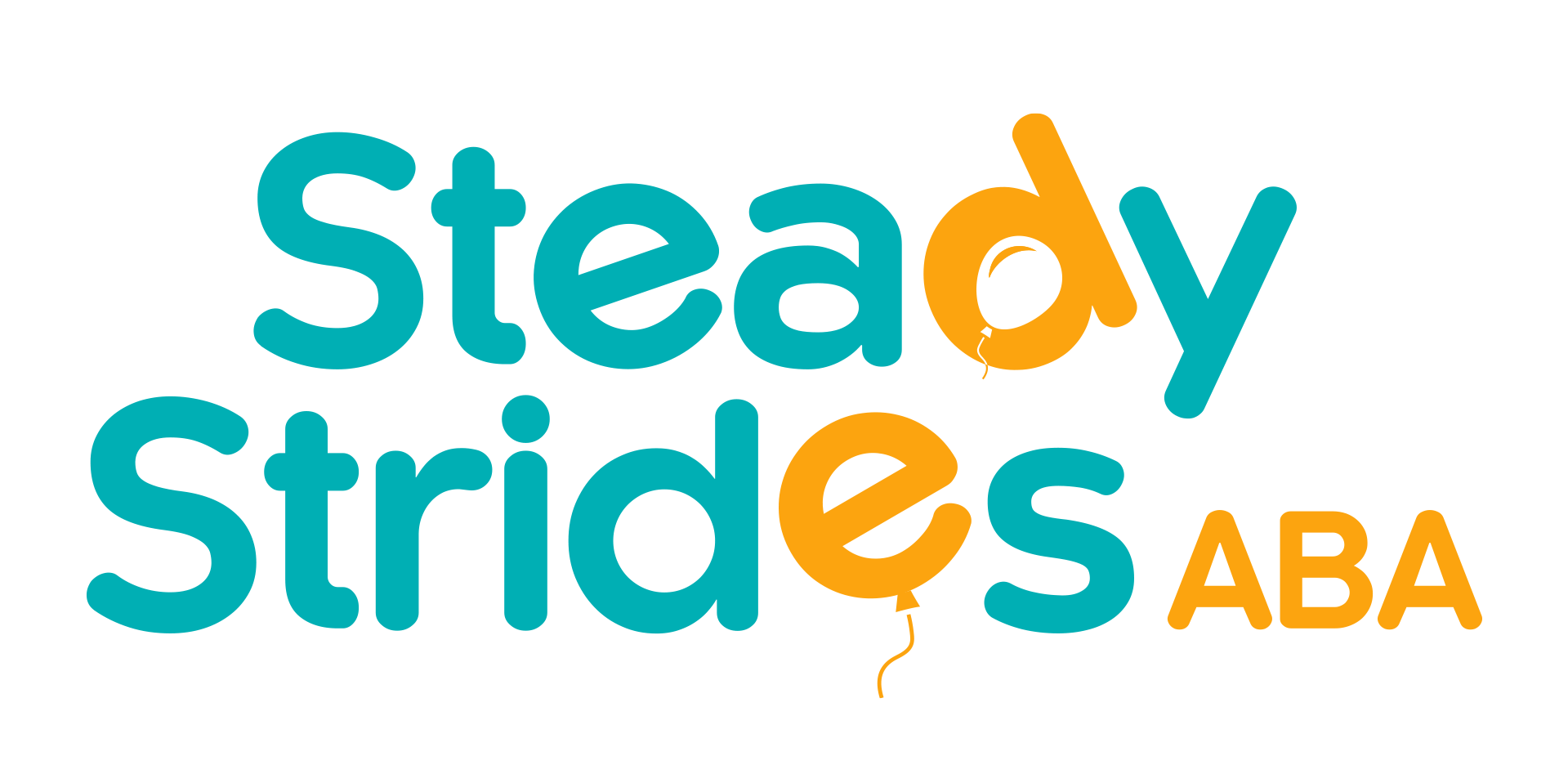Key Highlights
- Stimulus control transfer is a crucial component of Applied Behavior Analysis (ABA) in promoting adaptive behavior.
- It involves transferring control of a behavior from one stimulus to a new stimulus through training procedures.
- Key techniques for effective stimulus control transfer include prompt fading, transfer of stimulus control, and the use of desired behavior prompts.
- Stimulus control transfer is essential for generalizing skills across different settings and enhancing language acquisition.
- Addressing individual differences and ensuring maintenance of stimulus control over time are important considerations in ABA programs.
- Collaborative approaches and consistent implementation are key to maximizing behavior change, and monitoring and evaluation are important for measuring progress and adjusting strategies.
Introduction
Applied Behavior Analysis (ABA) is a highly effective approach in promoting positive behavior change and skill development in individuals with autism spectrum disorders and other developmental disabilities. One of the fundamental concepts in ABA is stimulus control transfer, which plays a crucial role in teaching individuals to respond to new stimuli in different contexts.
Stimulus control transfer refers to the process of transferring control of a behavior from one stimulus to a new stimulus. In simple terms, it means teaching an individual to respond to a specific cue or prompt and then gradually transferring that response to a new cue or prompt. This process is essential in helping individuals generalize their skills and behaviors across different settings and situations.
In this blog, we will explore the basics of stimulus control transfer in ABA, including its definition, importance, and the fundamental principles behind it. We will also discuss key techniques for effective stimulus control transfer, its application across different settings, and strategies for navigating challenges. Additionally, we will address frequently asked questions related to stimulus control transfer in ABA therapy. By the end of this blog, you will have a comprehensive understanding of the strategies and techniques involved in stimulus control transfer and their practical implications in promoting positive behavior change.
Exploring the Basics of Stimulus Control Transfer in ABA
Before delving into the techniques and applications of stimulus control transfer, let's first define what it means in the context of ABA. Stimulus control transfer refers to the process in which control of a behavior by one stimulus is transferred to a new stimulus. This process is a central component of ABA therapy, as it allows individuals to respond to specific cues or prompts and then generalize those responses to new cues or prompts.
In ABA, stimuli that evoke or influence behavior are known as discriminative stimuli. Stimulus control transfer involves teaching individuals to discriminate between different stimuli and respond accordingly. By transferring control of a behavior to new stimuli, individuals can learn to generalize their skills and behaviors across different environments and situations.
Defining Stimulus Control Transfer and Its Importance
Stimulus control transfer is a concept rooted in behavior analysis and is crucial for promoting adaptive behavior in individuals undergoing ABA therapy. It involves the process of transferring control of a behavior from one stimulus to a new stimulus.
The importance of stimulus control transfer lies in its ability to help individuals generalize their learned behaviors beyond the specific prompts or cues initially used in therapy. By teaching individuals to respond to a new stimulus, therapists and caregivers can ensure that the desired behavior is maintained across different settings and situations. This generalization of skills and behaviors is essential for individuals to navigate everyday life successfully and adapt their responses to various stimuli they encounter.
Stimulus control transfer allows individuals to become more independent in their behavior and response to different environmental cues. It promotes flexibility and adaptability, enabling individuals to apply their learned skills in real-world contexts. By transferring control of a behavior to new stimuli, individuals can broaden their repertoire of effective responses, leading to improved overall functioning and quality of life.
The Fundamental Principles Behind Stimulus Control in ABA
To understand the principles behind stimulus control transfer, it is essential to grasp the concept of stimulus control in ABA. Stimulus control refers to the process by which specific stimuli come to evoke or influence behavior. In ABA, discriminative stimuli are the cues or prompts that signal the availability of reinforcement or consequences for a particular behavior.
The fundamental principles behind stimulus control in ABA involve teaching individuals to discriminate between different stimuli and respond accordingly. Through systematic prompting and reinforcement, individuals learn to associate specific discriminative stimuli with appropriate behaviors.
Stimulus control transfer builds upon these principles by gradually transferring control of a behavior from one discriminative stimulus to a new stimulus. This process involves fading the original prompt and reinforcing responses to the new stimulus, ensuring that the desired behavior is maintained in the absence of the initial prompt. By transferring control of a behavior to new stimuli, individuals can generalize their skills and behaviors across different contexts, leading to increased independence and adaptive functioning.
Key Techniques for Effective Stimulus Control Transfer
To achieve effective stimulus control transfer, ABA professionals employ various techniques designed to fade prompts and transfer control from one stimulus to another. Key techniques include prompt fading, transfer of stimulus control, and the use of desired behavior prompts.
Prompt fading involves gradually reducing the strength or intensity of a prompt until the target behavior can be evoked by the target stimulus alone. This technique encourages the individual to respond to the natural stimulus without relying on additional prompts.
The transfer of stimulus control involves systematically transferring control of a behavior from one stimulus to a new stimulus. This process requires fading out the original prompt while reinforcing responses to the new stimulus.
Desired behavior prompts, such as visual cues or verbal instructions, assist in eliciting the desired behavior. These prompts are gradually faded out, ensuring that the individual can perform the behavior in response to the target stimulus alone.
The Process of Prompt Fading for Seamless Transitions
Prompt fading is a technique used in ABA therapy to smoothly transition the control of a behavior from an initially prompted response to an independent response. It involves gradually reducing the intensity or frequency of prompts until the desired behavior occurs in response to the target stimulus alone.
The process of prompt fading begins with the presentation of a stimulus prompt that guarantees a correct response. This prompt can be a verbal instruction, a physical gesture, or a visual cue. Over time, the prompt is faded by gradually making it less noticeable or less intrusive. For example, a physical prompt may be faded by reducing the amount of physical guidance provided.
By systematically fading prompts, individuals learn to respond to the target stimulus without relying on external cues. This promotes independence and generalization of the desired behavior across different settings and stimuli. Prompt fading ensures that individuals can demonstrate the desired behavior in a variety of real-world situations, enhancing their overall functional skills and independence.
Implementing Stimulus Prompts: Strategies and Examples
Implementing stimulus prompts is an important strategy in ABA therapy to teach individuals new skills and behaviors. Stimulus prompts are cues that are used to elicit the desired response from the individual. There are various types of stimulus prompts, including visual cues, verbal instructions, and physical gestures.
Visual cues involve using visual aids such as pictures, symbols, or written instructions to prompt the desired behavior. These cues can be gradually faded as the individual learns to respond to the target stimulus alone. For example, a picture of a toothbrush may be used to prompt the individual to brush their teeth.
Verbal instructions are another type of stimulus prompt. The therapist or instructor provides verbal cues or instructions to guide the individual to perform the desired behavior. As the individual becomes more adept at the task, the level of verbal prompting can be gradually reduced.
Physical gestures or prompts involve physically guiding the individual's actions to elicit the desired behavior. These prompts can be faded by gradually reducing the amount of physical guidance provided.
Overall, implementing stimulus prompts is an effective way to teach new skills and behaviors in ABA therapy. By using visual cues, verbal instructions, and physical gestures, individuals can learn to respond appropriately to specific stimuli and generalize their skills to different settings and situations.
The Role of Errorless Learning in Enhancing Outcomes
Errorless learning is a teaching approach that focuses on minimizing errors and ensuring a high rate of correct responses. In the context of stimulus control transfer, errorless learning plays a crucial role in enhancing outcomes.
By providing clear prompts and cues, individuals are guided towards the correct response from the start, minimizing the likelihood of errors. This approach helps to build confidence and promotes successful learning experiences.
Errorless learning is particularly beneficial for individuals with developmental disabilities, such as autism spectrum disorder, as it reduces frustration and increases motivation. By ensuring a high rate of correct responses, errorless learning enhances the individual's ability to acquire new skills and generalize them across different settings and contexts.
The application of errorless learning in ABA therapy has a positive impact on the individual's overall quality of life. It promotes independence, increases adaptive behaviors, and enhances the individual's ability to function effectively in various daily life situations. The reduction of errors and the emphasis on correct responses contribute to the successful transfer of stimulus control, leading to improved outcomes and greater independence for the individual.
Application of Stimulus Control Transfer Across Different Settings
The application of stimulus control transfer is not limited to specific settings or populations. It can be utilized across a wide range of environments and with individuals of all ages who are learning new skills. Whether it's a school, home, or community setting, the principles of stimulus control transfer remain the same.
For children with developmental disabilities, such as autism, stimulus control transfer is particularly valuable. It enables them to acquire new skills and behaviors that enhance their independence and improve their overall quality of life. By transferring stimulus control from one cue to another, individuals can navigate different environments and successfully demonstrate the desired behaviors in various contexts. The versatility of stimulus control transfer makes it an essential tool in promoting skill acquisition and behavior management across different settings.
Enhancing Language Acquisition Through Stimulus Control Techniques
Stimulus control transfer techniques play a crucial role in enhancing language acquisition in individuals undergoing ABA therapy. By transferring stimulus control from prompt cues to natural cues, individuals are able to develop and generalize their language skills.
In the early stages of language acquisition, prompt cues such as gestures or visual aids are used to elicit specific language responses. As the individual progresses, stimulus control is transferred to natural cues, such as the presence of the desired object or the context of the situation.
For example, if a child is learning to request a toy using a specific word, initially, a visual prompt or gesture may be used to elicit the word. Gradually, the visual prompt or gesture is faded, and the child learns to request the toy by responding to the natural cue of seeing the toy itself.
By using stimulus control transfer techniques, individuals develop the ability to use language in a variety of contexts and situations, promoting generalization and functional communication skills. Stimulus control transfer enhances the individual's language acquisition and facilitates their ability to express their needs and desires effectively.
Strategies for Skill Acquisition and Behavior Management
ABA therapy utilizes various strategies for skill acquisition and behavior management, and stimulus control transfer is a key component of these strategies. By transferring stimulus control, individuals are taught to respond to specific cues and prompts to acquire new skills and manage their behaviors effectively.
One strategy for skill acquisition is to gradually fade prompts and cues to promote independent performance of the desired behavior. This involves systematically reducing the intensity or frequency of prompts until the individual can demonstrate the skill without any external support.
For behavior management, stimulus control transfer techniques can be used to promote desired behaviors and decrease undesirable behaviors. By transferring control to specific cues or prompts, individuals learn to respond appropriately and engage in the desired behavior, while reducing the occurrence of problem behaviors.
Overall, using stimulus control transfer strategies in skill acquisition and behavior management helps individuals acquire new skills, generalize their behaviors, and effectively manage their actions in various settings and situations.
Navigating Challenges in Stimulus Control Transfer
While stimulus control transfer is a valuable tool in promoting adaptive behaviors, it does come with its challenges. Navigating these challenges is essential to ensure successful stimulus control transfer in individuals undergoing ABA therapy.
One challenge is addressing individual needs. Each individual is unique and may respond differently to stimulus control transfer techniques. ABA professionals must tailor the intervention to meet the specific needs and abilities of the individual.
Different situations may also present challenges in stimulus control transfer. Individuals may struggle to generalize the desired behavior across various settings or contexts. ABA professionals must provide opportunities for practicing the desired behavior in different situations to promote generalization.
Despite these challenges, stimulus control transfer plays a critical role in promoting skill acquisition and behavior management. By understanding individual needs and adapting intervention strategies, ABA professionals can help individuals overcome challenges and achieve positive outcomes.
Addressing Individual Differences in ABA Programs
Addressing individual differences is a crucial aspect of ABA programs, particularly in the context of stimulus control transfer. ABA professionals recognize that each individual has unique needs and abilities, and interventions must be tailored accordingly.
ABA professionals assess the individual's skills, preferences, and learning style to develop personalized intervention plans. This includes considering the presence of discriminative stimuli (SD), which are cues or signals that indicate the availability of reinforcement for a specific behavior.
By addressing individual differences, ABA professionals can design interventions that effectively transfer stimulus control and promote positive behavioral outcomes. This involves selecting appropriate prompts, fading strategies, and reinforcement schedules that align with the individual's specific needs and abilities.
ABA professionals play a critical role in identifying and addressing individual differences in ABA programs. Through their expertise and understanding of stimulus control transfer, they ensure that interventions are tailored to promote optimal learning and behavioral outcomes for each individual.
Strategies for Generalization Across Diverse Settings
Generalization is a key goal in ABA therapy, and strategies for generalization are essential in the context of stimulus control transfer. Generalization refers to the ability to demonstrate a behavior or skill learned in one setting or context in other settings or contexts.
To promote generalization, ABA professionals employ various strategies during stimulus control transfer. These strategies include providing opportunities for practicing the behavior in different settings and contexts, gradually fading prompts and cues, and reinforcing the behavior across multiple environments.
For example, if a child is learning to ask for a desired item using a specific word, the ABA professional may initially teach the skill in a therapy room. However, to promote generalization, the skill is practiced in various settings such as the home, school, or community.
By incorporating strategies for generalization, ABA professionals ensure that individuals can transfer the learned behavior or skill to diverse settings and contexts, enhancing their independence and functional abilities.
Ensuring the Maintenance of Stimulus Control Over Time
Maintaining stimulus control over time is crucial to ensure the long-term effectiveness of ABA interventions. Stimulus control refers to the ability of a specific stimulus to evoke a specific response.
To ensure maintenance, ABA professionals focus on reinforcing the desired behavior consistently and systematically. This involves providing ongoing opportunities for the individual to practice the behavior and receive reinforcement in various settings and contexts. By reinforcing the behavior in naturalistic situations, individuals are more likely to maintain the desired behavior over time.
Another strategy for ensuring maintenance is to periodically review and reinforce the behavior to prevent regression. This can be achieved through regular follow-up sessions or booster sessions to reinforce the learned behavior.
By implementing strategies for maintenance, ABA professionals maximize the long-term effectiveness of stimulus control transfer, ensuring that the individual retains the desired behavior and can continue to demonstrate it independently over time.
Collaborative Approaches to Maximize Behavior Change
Collaboration is a key aspect of maximizing behavior change in ABA therapy. A collaborative approach involves the active involvement of multiple stakeholders, including behavior analysts, therapists, parents, caregivers, and other professionals.
Behavior analysts play a critical role in designing and implementing behavior change interventions, including stimulus control transfer techniques. They collaborate with ABA therapists to ensure the consistent and effective implementation of interventions.
Collaboration with parents and caregivers is also essential. They provide valuable insights into the individual's preferences, interests, and daily routines, which can inform the development of personalized interventions.
By adopting a collaborative approach, ABA professionals can maximize behavior change by ensuring that interventions are tailored to the individual's specific needs, preferences, and environments. Collaboration enhances the effectiveness and sustainability of behavior change outcomes, promoting long-term positive changes in the individual's behavior.
The Importance of Collaboration with Behavior Analysts
Collaboration with behavior analysts is crucial in ABA therapy to ensure the effective implementation of stimulus control transfer interventions. Behavior analysts are experts in behavior change and have a deep understanding of the principles and techniques involved in ABA therapy.
Collaboration with behavior analysts allows ABA professionals to benefit from their expertise and guidance in developing and implementing stimulus control transfer strategies. Behavior analysts can provide valuable insights into the selection of appropriate prompts and cues, fading procedures, and reinforcement strategies.
By working closely with behavior analysts, ABA professionals can ensure that interventions are evidence-based, individualized, and aligned with best practices in behavior change. Collaboration enhances the quality and effectiveness of stimulus control transfer interventions, leading to positive behavioral outcomes for individuals undergoing ABA therapy.
Consistent Implementation: Key to Success
Consistent implementation is a key factor in the success of stimulus control transfer interventions in ABA therapy. It is essential to ensure that the desired behavior occurs consistently in response to the target stimulus.
Consistency in implementing stimulus control transfer techniques involves providing clear and consistent prompts, cues, and reinforcement for the desired behavior. ABA professionals must be diligent in providing prompts and cues consistently and fading them gradually to transfer control to the target stimulus.
Consistent implementation also requires ensuring that reinforcement is provided consistently and effectively. Reinforcement strengthens the association between the desired behavior and the target stimulus, promoting the transfer of stimulus control.
By maintaining consistent implementation, ABA professionals maximize the effectiveness of stimulus control transfer interventions and increase the likelihood of successful behavior change. Consistency creates a predictable environment for individuals, facilitating the generalization of the desired behavior and promoting positive outcomes.
Monitoring and Evaluation: Measuring Progress and Adjusting Strategies
Monitoring and evaluation are essential components of successful stimulus control transfer interventions in ABA therapy. They involve measuring and tracking the individual's progress and making adjustments to the intervention strategies as needed.
Monitoring involves regularly collecting data on the individual's performance and progress towards the desired behavior. This data provides valuable insights into the effectiveness of the stimulus control transfer techniques and helps identify areas for improvement.
Evaluation involves analyzing the data collected during monitoring and making informed decisions about the intervention strategies. It includes determining if the desired behavior has been successfully transferred to the target stimulus and if adjustments are needed to enhance the individual's progress.
By continuously monitoring and evaluating the individual's progress, ABA professionals can make data-driven decisions and make necessary adjustments to the stimulus control transfer interventions. This iterative process ensures that the interventions are tailored to the individual's needs and maximize the likelihood of successful behavior change.
Conclusion
In summary, understanding and implementing stimulus control transfer in ABA require a comprehensive grasp of its principles and techniques. By focusing on prompt fading, errorless learning, and generalization strategies, behavior analysts can facilitate skill acquisition and behavior management effectively. Overcoming challenges like individual differences and maintaining stimulus control over time is crucial. Collaborative efforts with behavior analysts and consistent implementation are paramount for success. Monitoring progress, addressing misconceptions, and involving parents in the process are key components to ensure positive outcomes. By following best practices and utilizing available resources, educators and therapists can enhance behavior change and foster growth in individuals undergoing ABA programs.
Frequently Asked Questions
What Are Common Misconceptions About Stimulus Control Transfer?
A common misconception about stimulus control transfer is that it only applies to individuals with autism spectrum disorder. In reality, stimulus control transfer is a fundamental concept in applied behavior analysis that can be utilized with individuals of all abilities to teach new skills and promote adaptive behaviors.
How Can Parents Support Stimulus Control Transfer at Home?
Parents can support stimulus control transfer at home by creating an environment that promotes the transfer of stimulus control. This can include providing natural cues, such as visual prompts or verbal instructions, to prompt the desired behavior and consistently reinforcing the behavior when it occurs in response to the target stimulus.
What Are the Signs of Successful Stimulus Control Transfer?
Signs of successful stimulus control transfer include the individual consistently demonstrating the desired behavior in response to the new stimulus without the need for prompts or cues. They are able to generalize the behavior to different settings and contexts, showing flexibility and adaptability in their responses.
How to Overcome Resistance to Change in ABA Sessions?
To overcome resistance to change in ABA sessions, ABA professionals employ various strategies. These may include using gradual prompting and fading techniques, incorporating reinforcement and positive reinforcement strategies, and addressing any underlying factors that may contribute to the resistance, such as anxiety or sensory issues.
Can Stimulus Control Transfer Be Applied to Adults with Autism?
Yes, stimulus control transfer can be applied to adults with autism spectrum disorder. It plays a vital role in promoting functional skills and independence in adults, enhancing their quality of life. By transferring stimulus control, adults with autism can learn new skills and adapt their behaviors to different environments.
What Role Does Reinforcement Play in Stimulus Control Transfer?
Reinforcement plays a crucial role in stimulus control transfer. It strengthens the association between the desired behavior and the target stimulus, promoting the transfer of control. By consistently reinforcing the correct response to the target stimulus, individuals learn to independently and consistently demonstrate the desired behavior.
How Long Does It Typically Take to Achieve Stimulus Control Transfer?
The duration of achieving stimulus control transfer varies depending on the individual and the complexity of the behavior being taught. It can take weeks or months of consistent practice and reinforcement in ABA therapy to achieve stimulus control transfer for a target behavior, ensuring a consistent and desired response to the target stimulus.
Are There Any Tools or Resources to Aid in Stimulus Control Transfer?
Yes, there are various tools and resources available to aid in stimulus control transfer. Visual prompts, such as pictures or written instructions, can assist individuals in responding to the target stimulus. Virtual reality technology is also being utilized to create realistic environments that facilitate stimulus control transfer. A text table is as follows:
| Tools/Resources | Description |
|---|---|
| Visual Prompts | Pictures, symbols, or written instructions |
| Virtual Reality | Simulated environments for realistic practice |
How Can Educators Incorporate Stimulus Control Transfer in Classrooms?
Educators can incorporate stimulus control transfer in classrooms by implementing discrimination training, where individuals learn to respond to specific cues or prompts. This can be done by providing visual or verbal cues, gradually fading prompts, and reinforcing the desired behavior. Creating a classroom environment that incorporates natural cues can also support stimulus control transfer.
What Are the Best Practices for Documenting Progress in Stimulus Control Transfer?
Best practices for documenting progress in stimulus control transfer involve systematic monitoring of the individual's performance. This can include keeping detailed records of the target behavior, the target stimulus, and the prompts or cues used. Ongoing data collection and analysis provide valuable insights into the effectiveness of the interventions and guide decision-making regarding the transfer of stimulus control in ABA therapy.













